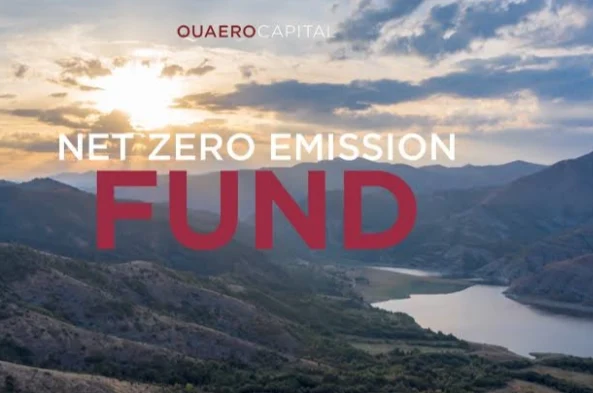Net-Zero Funds: Fueling a Sustainable Future
The fight against climate change demands a collective effort, and the financial sector has a crucial role to play.
Enter Net-Zero Funds, emerging as powerful tools for driving environmental progress and offering investors an opportunity to align their values with their portfolios. But what exactly are they, and how are they changing the investment landscape?
Demystifying Net-Zero Funds:
At their core, Net-Zero Funds invest in companies and projects actively transitioning towards achieving net-zero greenhouse gas emissions by 2050. This translates into supporting renewable energy infrastructure, sustainable technologies, and green businesses across various sectors. They differ from traditional funds by employing stricter criteria to ensure their holdings contribute to climate solutions.
The Booming Green Landscape:
Net-Zero Funds are experiencing exponential growth, with assets under management surpassing USD 2 trillion globally. This surge reflects growing investor demand for sustainable solutions and aligning financial goals with environmental responsibility. Moreover, government policies and regulations promoting decarbonization further propel this trend.
Organizations that support Net-Zero Funds
Organizations Supporting Net-Zero Funds: Driving Sustainable Investment
As the quest for net-zero emissions intensifies, various organizations play crucial roles in supporting and promoting Net-Zero Funds, these financial instruments dedicated to decarbonization efforts. Let's explore some key players across different sectors:
Investment Firms:
- BlackRock: Committed to achieving net-zero by 2050, BlackRock offers various Net-Zero Funds like the iShares Global Clean Energy ETF and the BlackRock Global Climate Transition Equity Fund, managing trillions in sustainable assets.
- Goldman Sachs: Pledging $2 trillion in sustainable finance by 2030, Goldman Sachs launched the Goldman Sachs Future Planet Equity ETF, investing in companies transitioning to a low-carbon economy.
- BNP Paribas Asset Management: This firm offers diverse Net-Zero Funds, including the BNP Paribas Climate Engagement Europe UCITS ETF and the BNP Paribas Global Net Zero UCITS ETF, catering to specific sustainability goals.
Non-Governmental Organizations (NGOs):
- The Climate Bonds Initiative: Promoting climate-friendly projects, this organization developed the Net-Zero Standard, helping investors identify impactful Net-Zero Funds.
- CERES: A leading sustainability advocate, CERES works with investors and companies for a sustainable future. The Investor Network on Climate Change, convened by CERES, unites investor voices on climate action.
- The World Wildlife Fund (WWF): Dedicated to global conservation, WWF launched the Net Zero Asset Owner Alliance, bringing together asset owners committed to net-zero by 2050.
Government Bodies:
- The United Nations Environment Programme Finance Initiative (UNEP FI): Partnering with the financial industry, UNEP FI launched the Net-Zero Asset Owner Alliance and the Net-Zero Banking Alliance, mobilizing financial institutions for net-zero goals.
- The European Commission: Launched the Sustainable Finance Action Plan, aiming to mobilize private investment for sustainability. The plan actively promotes and incentivizes Net-Zero Funds.
- The United States Department of the Treasury: Established the Climate Risk Committee, assessing climate risks to the US financial system and exploring ways to promote Net-Zero Funds.
These are just a few examples, and the ecosystem supporting Net-Zero Funds is constantly evolving. With growing momentum for sustainability, expect more organizations to emerge, shaping the future of responsible investment and accelerating the transition to a net-zero future.
Key Performance Indicators (KPIs) for Net-Zero Funds: Measuring Impact and Progress
Evaluating the performance and impact of Net-Zero Funds goes beyond traditional financial metrics. Here are some key performance indicators (KPIs) to consider:
Impact-Based KPIs:
- Portfolio Alignment: Percentage of portfolio holdings aligned with a net-zero pathway, considering factors like renewable energy investments, emission reduction targets of companies, and green technology exposure.
- Carbon Footprint Reduction: Absolute or relative reduction in the carbon footprint of the portfolio companies over time, considering Scope 1, 2, and 3 emissions.
- Sustainable Development Goals (SDGs) Contribution: Alignment of investments with specific SDGs, demonstrating the fund's contribution to broader sustainability goals.
Financial Performance KPIs:
- Net Return: Overall financial return achieved by the fund, balancing financial performance with impact objectives.
- Risk-Adjusted Return: Sharpe Ratio or other risk-adjusted return measures to assess the return generated relative to the level of risk taken.
- Greenium/Brown Discount: Comparison of the fund's price-to-earnings ratio to those of comparable non-sustainable funds, indicating any potential green premium or brown discount.
Engagement & Transparency KPIs:
- Number of Engagement Activities: Frequency of engagement with investee companies on climate-related issues and decarbonization strategies.
- Quality of Engagement: Depth and impact of engagement activities, measured by changes in company policies or practices.
- Transparency Reporting: Comprehensiveness and quality of sustainability reporting, including portfolio alignment disclosure, impact metrics, and engagement activities.
Additional Considerations:
- Benchmarking: Compare your fund's KPIs against relevant benchmarks or industry averages to evaluate relative performance.
- Customization: Adapt and prioritize KPIs based on your fund's specific objectives, investment strategy, and target audience.
- Data Availability: Ensure accessibility and reliability of data needed to track and report on chosen KPIs.
By monitoring these KPIs, Net-Zero Funds can demonstrate their commitment to achieving environmental impact alongside financial returns, attracting investors seeking alignment with both values. Remember, this list is not exhaustive, and specific KPIs should be tailored to your unique fund and its goals.
Beyond Hype: Evaluating Impact and Performance
While the potential of Net-Zero Funds is undeniable, careful evaluation is crucial. Not all funds labeled "Net-Zero" may have the same commitment or impact. Investors need to scrutinize their underlying holdings, methodologies, and transparency to ensure they align with their values and climate goals.
Challenges and Opportunities:
The path to achieving net-zero emissions is complex, and Net-Zero Funds face challenges. Defining and measuring "net-zero" across diverse sectors remains a work in progress. Additionally, greenwashing concerns exist, necessitating robust regulatory frameworks and transparency measures.
Looking Ahead: A Sustainable Investment Horizon:
Despite challenges, the future of Net-Zero Funds is promising. Continuous innovation in sustainability solutions, coupled with stricter regulations and investor scrutiny, will lead to more impactful and transparent offerings. Ultimately, Net-Zero Funds have the potential to be a key driver of the transition to a sustainable future, offering investors and businesses alike a powerful tool for positive change.





